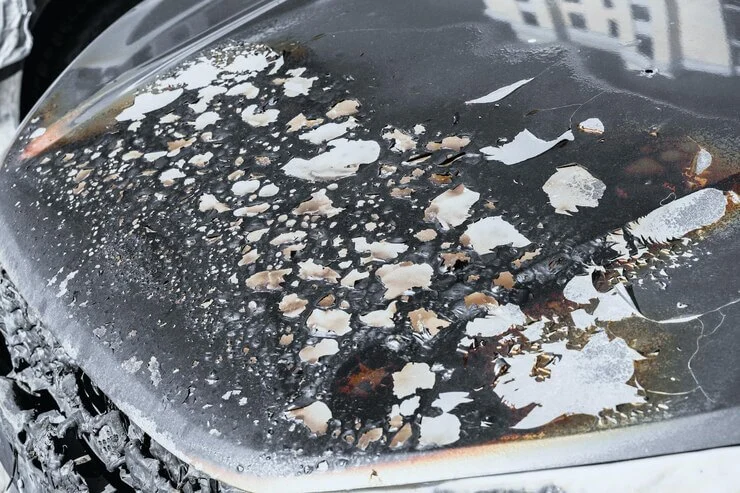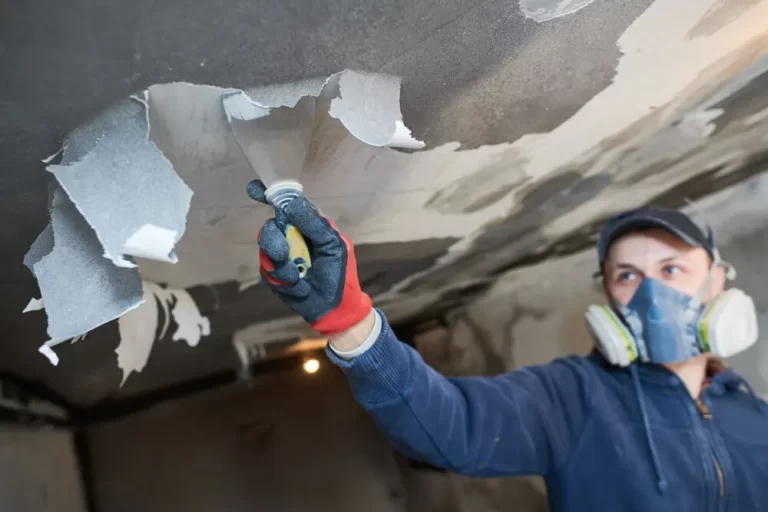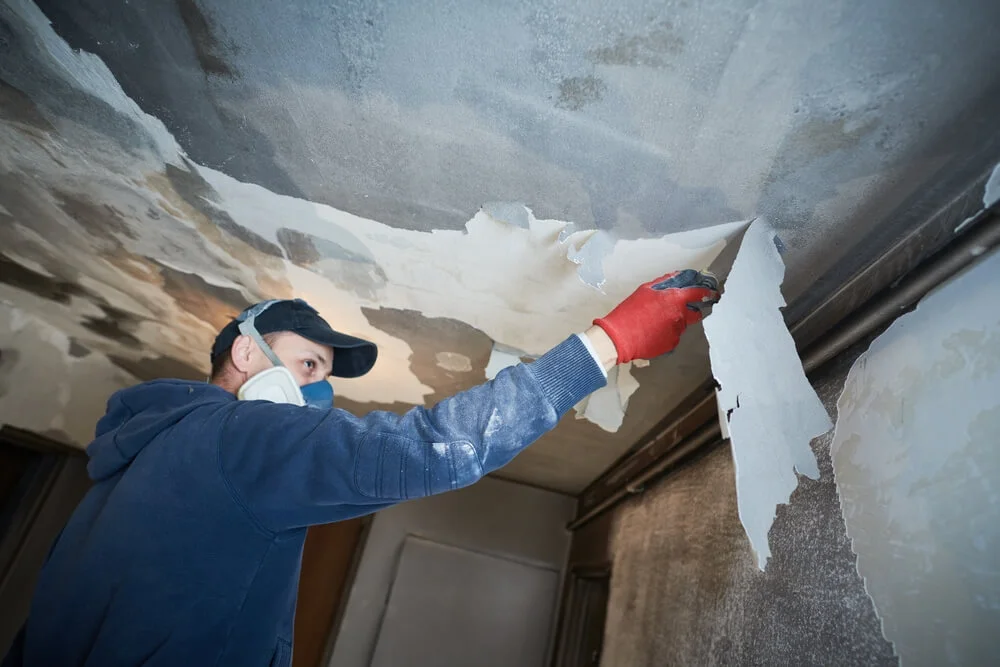Is Paint Flammable/Combustible? Details You need to Know
You might wonder, “Is paint flammable/combustible?” and what to do if the spray paint in your house is flammable. It’s not easy to answer this question in simple Yes or No words. Multiple facts highlight the answer.
Because there are so many kinds of paints, this is an excellent question with a more complicated solution than it first appears. I attempted to explore the main types of paint to find the answers you want.
Some types of paint, including spray paints, which are incredibly volatile in aerosol form, are highly flammable or combustible. Water-based paint, like acrylic paint, on the other hand, can be flame-retardant because of the water paint.

Let’s examine the distinction between flammability and combustibility of materials. I will also discuss the unique risks connected to the various paint kinds. Firstly, you need to understand the difference between flammable and combustible.
Is Paint Flammable/Combustible? The difference between Flammable and Combustible
Flammable and combustible are nearly two important terms I use in everyday life. Most people consider them as these are similar, but there is little distinction between the two from a technical standpoint. As per international standards, flash points distinguish flammable and combustible liquids. It’s the point at which anything will burn.
For everyday use, a flashpoint of 100 ° Fahrenheit or above is considered flammable. Combustible liquids for construction, however, must have a flashpoint of 140 degrees Fahrenheit or above.
The flashpoint of flammable liquids used in construction must be below 140 degrees Fahrenheit. In the general industry, a liquid is classified as a flammable liquid if its flashpoint is lower than 100 degrees Fahrenheit.

The term “paint” has no standard meaning. The term “paint” refers to a wide variety of items that you may use to cover other materials.
As a result, although some paints are entirely flame-retardant, others are flammable, and some are combustible.
The basis of the paint is quite essential, and as you might assume, colors with flammable bases, such as alcohol, are almost always combustible and rapidly catch fire.
Is Paint Combustible?
Some paints can catch fire. Aerosols and spray paints burn easily. When they are damaged or exposed to intense heat, they catch fire. Any product that contains spray-on oil-based paint carries a greater danger of fire and explosion.
Is Paint Flammable?
Technically, liquid paint frequently does not ignite. There are several paint kinds and solvents that emit flammable or poisonous vapors. If the temperature rises too much or a fire breaks out close, the paint vapors ignite, which is extremely dangerous.
Spray and oil-based paints are two examples of paints that can catch fire. Flame-retardant substances are frequently found in oil-based paints, varnishes, and stains.
Acrylic, vinyl, and latex paints are water-based and not flammable. Many water-based, non-flammable paints for painters are available. Even flame-retardant patterns are available in certain water-based acrylic paints. Water-based paints can also be combustible, though.
The base determines if the paint is flammable or combustible. But the most typical kinds of explosive paint are as follows:
Check the paint’s ingredient list for /optimal results. They have to specify if the item is flammable or combustible and indicate any potential hazards you should be aware of.
Types of Flammable Paints
Paint is often flammable if it contains an explosive base ingredient, such as oil, alcohol, or solvents. The most common kinds of flammable paint consist of:
Spray Paint
Because gas fuels contain propane or butane, both of which have high flammability. So, spray paint is quite flammable.
Old, damaged, or improperly closed cans of spray paint release fumes that can ignite and have disastrous results. Also, spray paints may flashback because of the pressure in the aerosol can.

At this point, escaping gases ignite and return heat to the compressed container (almost like an invisible fuse string). The steel container becomes shrapnel after the liquid within the canister warms up and maybe explodes like a grenade.
In my experience, spray paint is no longer flammable after it has been sprayed on a body and has dried. The paint dries and then becomes safe when the gas propellants disappear.
Be careful to store spray paints away from other volatile items and from the hot and flames if you have them at home or work. Once they are emptied, broken, or old, you should properly dispose of them as well.
Solvent-Based Paint
Because of the chemicals, it contains, solvent-based paint is combustible. Solvent-based paint should, therefore, never be applied close to heat sources or flames and should always be kept in an excellent, distant location from other flammable products.
Solvent-based paint is no more explosive after drying since the solvents’ flammable qualities have evaporated.
Oil Paint
When you consider how oil is used to power heaters and flames, it seems evident that oil paints are pretty explosive. Oil paint is no longer flammable once it has dried because its solvents vaporize and cure as it dries.

Oil paintings would burn to ashes in a home fire because oil paint is flammable once it dries. If you enjoy oil painting, place your supplies safely away from heat and fire. You should also carefully close and cover the paint tubes after each use.
Oil-based Enamel Paint
Is oil-based paint flammable? Because of the oil’s chemicals, some oil-based enamel paint varieties are flammable. Today, great water-based enamel paints produce the same finish and are safer to use and store.
Exterior House Paint
Numerous exterior house paint varieties are frequently oil-based and hence combustible.
They are oil-based to keep them durable to the elements and weather, but you should always exercise caution when storing large quantities of such paints at a house or on a construction site since they present a fire risk.
When feasible, you should utilize an outside paint store; make sure it’s far away from your home. Additionally, make sure that youngsters cannot access the paint shop and that it is located distant from sources of heat and flame.
Oil-Based Epoxy Paint
Oil-based epoxy paint is regarded as a combustible product because of the solvents it contains. On the other hand, water-based epoxy paint is less flammable and safer to apply.
It is typically used to coat garage floorboards and other durable surfaces, so you should take additional measures if you have a lot of oil-based paint in your house. The incendiary qualities of cured epoxy paint varnish, but the resin is still flammable.
Non-Flammable Paints
Paints that are “water-based” are often non-flammable. This is because water is not flammable and is utilized to create fires rather than fuel them.
Paint can also be used as a fire suppressant if it contains sufficient water. As with every rule, there are always exceptions, and several water-based paints do have the potential to dry up and catch fire.
You may deliberately prevent the rise of fires around your home by investing in paint that is flameproof.
The category of fire retardant paint includes non-flammable paints. These unique paint varieties provide a protective layer to limit the spread of the flame in the event of a fire. The covering resembles conventional paints and varnishes in appearance. However, it’s challenging to tell the difference with only your sight.
In commercial buildings or other places where a fire can start, specialized, non-flammable paints are frequently used. The different classic paint varieties that are not usually explosive include:
Kinds of Non-Flammable Paint Include:
Acrylic Paint
Is acrylic paint flammable? Acrylic paint may be stored anywhere in your home because it is water-based, making it non-flammable and harmless to use. Acrylic paint, also known as plastic polymer, transforms from a liquid to a solid when it dries.
Because this material is combustible, you should exercise caution while hanging acrylic paintings over open flames and keeping acrylic-painted decorations away from fire.
Watercolor Paints
Is water-based paint flammable? Due to high water content, watercolors or water-based paints are among the safest paint varieties. They are excellent for kids’ use and even secure in dry form. Because they are neither harmful nor explosive, they are allowed on airplanes.

Emulsion Paint
These days, water-based latex is used to create emulsion paint. Because of this, most emulsion paints are non-flammable and completely safe for use and storage in homes.
Anyone looking to decorate their interiors has access to fantastic fire-resistant emulsion paints that actively stop the spread of flames.
Latex Paint
Is latex paint flammable or combustible? Since latex paints are based on water, they are not flammable materials. Latex paint has a rubberized feel when it dries, yet even in this solid state, it is not combustible.
Glass Paint
Because windshield paint is water-based, it cannot catch fire. It is still safe to use and non-flammable even when dried
Chalk Paint
Since chalkboard paint is water-based, it cannot catch fire. In reality, it is regarded as a fire-resistant paint that actively retards and extinguishes the spread of fires.
Fabric Paint
Since cloth paint is water-based, it is not flammable. Due to its lack of toxicity and offensive odor, it is pretty safe to use anywhere.
Wall Paint
Most wall paints you could use around your home are water-based latex paints. Water-based paints are not flammable since they do not include solvents that quickly catch fire.
Are Paint Cleaners Flammable?
Oil painting, cleaning, and working chemicals might be a fire hazard. The substances you use to wipe off oil paint may be very volatile and must never be left lying around, along with paint thinner, turps, and white spirit.
Is Paint Thinner Flammable?
Are paint thinners flammable? There may be flammable vapors in other materials, such as paint thinner. Thinners aid in the dissolution and removal of paint. If you use oil or enamel paint, they are typical. However, most paints thinner is more flammable than combustible.
Paint thinner is made of volatile organic compounds that aren’t very flammable or combustible. However, some producers use mixtures that contain petroleum, making them explosive.
The majority of paint thinners only burn or ignite when they get into touch with an intense flame. They don’t frequently ignite or start a fire when given a little spark. Nevertheless, applying a lot of liquid paint thinner might provide a fire risk, particularly in a building environment.
Hazards of Flammable or Combustible Paints
Use and store paint thinners according to best practices to avoid fires and explosions. After usage, flammable or combustible paints are also hazardous. Make careful you properly dispose of the paint, or you risk starting a fire.
Chemicals that are flammable or combustible can harm your health and inflict injuries from fire or explosions. For instance, breathing in the fumes might result in Illness, Disease, or Brain Injury.
Before using or storing paint in your house, read all the instructions on the paint container. By doing this, you may be able to lower your risk of fire as well as poisoning or chemical burns.
Guidelines for Safety When Using Paint and Paint Thinner
Paints, including paint thinners, should be handled cautiously since they are combustible chemicals. Follow these safety recommendations to help avoid fires:
Tip 1: Never Combine it with Paints
You should never combine paint and paint thinner with anything else. Never mix water with solvents, including paint thinner, since this might result in an explosive reaction.
Tip 2: Keep Any Flame Away From It
Never keep paint or paint thinner next to a stove or other heat source. This covers furnaces, water heaters, and space heaters.
Use a torch instead of a candle if you want to see in the dark while painting. Candles are simple to knock over, igniting paint fumes. People ask, “Are paint fumes flammable?”. Yes, vapors are highly flammable.
One of the biggest causes of flames is smoking. Avoid smoking if you are using paint or paint thinner.
Tip 3: Keep it safely stored
Store paint and paint thinner in a cool, dry area. To avoid evaporation, they should also be stored in sealed containers.
Tip 4: Make Use of Safety Gear
Wear the appropriate safety gear when dealing with paints or paint thinner. This comprises a respirator mask, gloves, and eye protection.
Tip 5: Have A Fire Extinguisher Accessible
It’s crucial to get a fire extinguisher closed in case of a fire. To ensure correct use, read the instructions to use the fire extinguisher.
Tip 6: Make airflow
Make sure to generate ventilation while using paint or paint thinner. You may achieve this by employing a fan or opening windows.
Tip 7: Get Rid of It Properly
It is essential to dispose of paint and paint thinner properly. Never discard them or dump them down the sink.
How To Securely Store Highly Combustible Paints?
It is safe to have and store combustible paint in households. You need to take the necessary measures and follow the necessary safety standards.
When you keep a lot of volatile paint in one location, there is a risk that it might catch fire and spread quickly, creating a dangerous situation. Because of this, you ought to always:
Dry Out Any Leftover Paint
Set the remaining paint out in the direct sunlight before tossing it away, even if there is just a little left in the can. For instance, wet latex might be dangerous. Most places allow you to dispose of dry paint, especially water-based latex and acrylic paints, with your ordinary home garbage.
You should get a paint rust inhibitor from your neighborhood home improvement store if you need to dry a lot of paint. To help the paint soak off faster, you might add newspaper or cat litter.
As the paint sets, keep the paint can in a place where airflow is excellent and stir it occasionally. Fill the container with a paint curing agent after the paint feels firm. Try repurposing the plastic or metal paint container while disposing of the paint in the garbage.
Leave It In The Hands Of The Authorities
Not all types of paint, such as oil-based paint, can be dried up and discarded with regular garbage at the curb. Additionally, you might not be able to rid of paints in that manner in some places. Find a local toxic waste drop-off location or seek businesses that deal with paint disposal, such as PaintCare.
Is Paint Flammable- FAQs
Conclusion- Is Paint Flammable?
For safety reasons, learning how to use, store, and dispose of paints is essential. Flammable or combustible materials can endanger your health and start a fire. Always practice safety by checking the contents in your paints and keeping them out of the reach of youngsters.
Did you discover anything unique concerning “Is the paint combustible/flammable?” Comment here with your ideas and experiences. Inform your loved ones that they should read the article to keep them safe while painting a car, wall, or metal.

